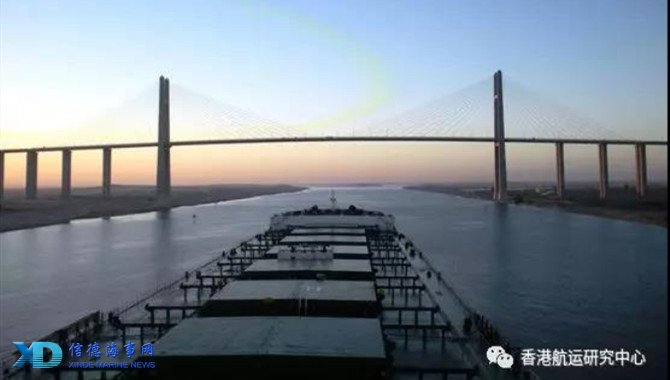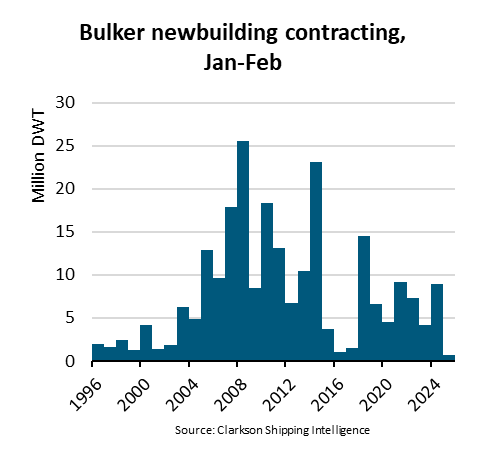
The Brazilian dam collapse hasreceived widespread market attention, and it was widely expected that Brazilianiron ore output will be significantly reduced. This led to a sharp rise in ironore prices and an irrational decline in the Baltic Capesize Index (BCI), whichfell to record-low 92 points on April 2,a significant decrease of 95% since the beginning of the year. As the Braziliancourt agreed to restore operations of the Brucutu mine with a productioncapacity of 30 million tons, the threat of production cuts in the largestmining area imposed by the accident will be gradually eliminated, and thecapacity of Vale shut down is nearly halved. As the accident handling progressedlater on, the actual impact on iron ore supplies will become clearer, and BCIwill recover from the excessive panic in the early stage, and the freight rateis expected to gradually recover.
1. Both theBrucutu mine and the Guaíba port received notice of restoring operations
On March 19, Vale announced that it had received documents fromthe Minas Gerais State Inspection Office and had approved the restoration ofoperations of its Brucutu mine and Laranjeiras tailings dam. On March 21, theenvironmental protection authority granted an operation certificate to theLaranjeiras tailings dam. The annual production capacity of The Brucutu mine isabout 30 million tons, accounting for about 8% of Vale. At present, theBrazilian government is still stepping up efforts to deal with the tailingsdam. The resumption of production in the Brucutu mining area may still faceuncertainties. However, after the court lifts the mining area ban, theresumption of production will be significantly accelerated, and the mine isexpected to gradually resume operations in the near future.
2. The expansionof the S11D project in the north will partly offset the actual impact ofproduction capacity being shut down
Bolstered by the S11D project, the increased capacity in the northis likely to compensate for the production cut in the dam collapse area. In2018, the S11D project recorded an export of 59.4 million tons of iron ore.Earlier, Vale officially stated that the output of S11D project will reach itscapacity limit in 2019, and is expected to increase production by 30 milliontons to cancel out the loss caused by the accident. According to data from theBrazilian foreign trade department, in the first two months of this year, the ironore export volume recorded in the S11D project is 12.1 million tons, asubstantial year-on-year increase of 68%, indicating a largely expedited output.In addition, Vale currently has a total production capacity of 450 million tonsand provides an output of about 380 million tons. With strong internal abilityof self-regulation, the company is fully capable of reducing the actual impactof shutting down capacity in the south through internal reallocation ofresources.
3. Anglo American’s Minas-rio project resumed production; Brazil's total output continues to grow
The operation of Minas-rio mine under Anglo American was halted inMarch 2018 due to conveyor belt damage. That year, the mine only produced 3.16million tons of iron ore. In 2019, it resumed production with a productiontarget of 18-20 million tons and an increase of about 15 million tons inproduction. Driven by sufficient stocks and the resumption of production of theMinas-rio mine, Brazil's iron ore exports continue to grow. According to datafrom the Brazilian Ministry of Foreign Trade, Brazil exported a total of 62.1million tons of iron ore in the previous two months, which is 14.5% higher thanthe year-ago export volume. In February alone, Brazil's iron ore exportsreached 28.9 million tons, a year-on-year increase of 21.6%.
4. The marketcontinues to maintain a weak balance; BCI will gradually recover from theirrational low
From the perspective of the China-Brazil route alone, consideringthe production reduction as a result of the dam collapse, S11D expansion andAnglo American’s resumption of production, Brazilian iron ore exports set toremain stable with the potential of a rise in 2019. The annual increase is expectedto reach 15 million tons. Vale will add 11 ships to its 400,000-ton VLOC fleetthis year. Considering the operation time, the annual iron ore cargo will beabout 10 million tons. Therefore, the spot volume that has a direct impact onthe freight rate will increase slightly by about 5 million tons compared withthat in 2018, and will continue to improve moderately.
From the perspective of the entire dry bulk market, the supply anddemand landscape will continue to improve in 2019. Looking back at the trend ofthe dry bulk market since 2002, the average annual growth rate of dry bulkshipping demand from 2002 to 2007 was 1.8 percentage points higher than thegrowth rate of transport capacity, so the market rose substantially; from 2008to 2015, the average growth rate of demand was 5% lower than that of thetransport capacity, during which period the market fell sharply and continuedto maintain a low level. Since 2016, the growth rate of shipping demand andcapacity supply has remained basically the same, both at around 3%. The markethas recovered from a low level to somewhere near the break-even level.
According to the order data, by the end of 2019, the global drybulk cargo transport capacity will reach 865 million tons, a year-on-year 3%rise, and will continue to remain at a low level, basically on a par with thedemand growth. Moreover, the IMO2020 rules may lead to reduced transportefficiency this year. Some institutions expect that about 1% of the transportcapacity will withdraw from the market because of tank cleaning, and 0.6% fromthe market for installation of desulfurization towers. Hence, the supply anddemand landscape of the market will improve accordingly.
In summary, the Brucutu mining area and the Guaíba port haveresumed operations. The capacity shut down is close to half of the levelrecorded in earlier stages. The threat of a sharp reduction in Brazilian ironore production is partially removed, and Brazil’s production as a whole isexpected to continue to grow in 2019. The Capesize shipping market has fallensharply due to the expected production cuts in the early stage. The current BCIhas fallen to a record low, and the rental level has been unable to cover thebasic operating costs of shipowners. Is it true that BCI would slump to zeroand shipowners would bear all costs and serve cargo owners for free? A rationalmarket certainly would never be like that. As recently the biggest black swanevent in the market is likely to ease off, the dry bulk market will graduallyreturn to a reasonable level determined by the market supply and demandfundamentals. Coupled with Australia will speed up shipments after thehurricane, BCI is expected to gradually recover from the irrational low levelcaused by panic.
Source:HKMRC
Please Contact Us at:
admin@xindemarine.com


 Ningbo Containerized Freight Index Weekly Commentar
Ningbo Containerized Freight Index Weekly Commentar  Ningbo Containerized Freight Index Weekly Commentar
Ningbo Containerized Freight Index Weekly Commentar  Ningbo Containerized Freight Index Weekly Commentar
Ningbo Containerized Freight Index Weekly Commentar  BIMCO Shipping Number of the Week: Bulker newbuildi
BIMCO Shipping Number of the Week: Bulker newbuildi  Ningbo Containerized Freight Index Weekly Commentar
Ningbo Containerized Freight Index Weekly Commentar  Ningbo Containerized Freight Index Weekly Commentar
Ningbo Containerized Freight Index Weekly Commentar